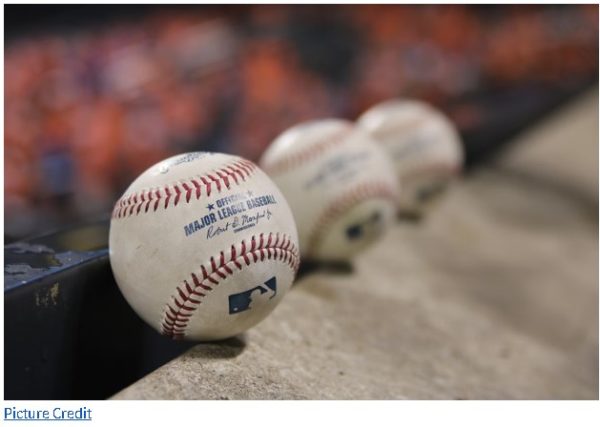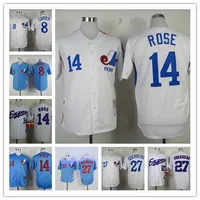- Pro Maple Composite Wood Hybrid L180 Bat by AXE: A ReviewPosted 6 years ago
- Book Review: Heroes, Scamps and Good GuysPosted 7 years ago
- Book Review: Baseball Before We Knew ItPosted 7 years ago
- Book Review: Omar!Posted 7 years ago
- Book Review: A Deadly GamePosted 7 years ago
- Book Review: The Manager’s DaughterPosted 9 years ago
- Baseball in the Garden of Eden, A Book ReviewPosted 14 years ago
NEW SCHOOL VS. OLD SCHOOL BASEBALL
- Updated: November 18, 2022

Views: 68
“We want you to play first base for the Oakland A’s.”
“OK, well, I’ve only ever played catcher.”
“It’s not that hard, Scott. Tell him Wash.”
“It’s incredibly hard.”
With these lines from the movie “Moneyball,” Billy Beane, Scott Hatteberg and Ron Washington epitomized the coming revolution of sabermetric baseball and fueled the clash between old school and new school baseball.
Hatteberg found himself in the uncomfortable position of playing first base for the Oakland A’s after Beane, the general manager of the A’s, signed the lifelong catcher as a free agent before the 2002 season. What led Beane to acquire him was the basic premise behind the “Moneyball” philosophy of player acquisition: identify players undervalued by the market through analytical data under-utilized or even unknown (at the time) by the baseball establishment. A premium was to be placed on the ability to get on base and create runs. Instead of measuring a hitter’s value through traditional statistics like batting average, home runs and runs batted in, statistics such as wOBA (weighted on-base average) and wRC+ (weighted runs created) entered the evaluation lexicon, measuring a hitter’s relative value to the league average.
Given the limited budget of the A’s, Beane knew re-signing free agent first baseman Jason Giambi would be out of the question. Giambi put up monster numbers in 2001 with 38 home runs, 120 RBIs and 47 doubles. In a traditional sense, those numbers would be impossible to affordably replace. It would’ve taken a king’s ransom to land a free agent like Giambi. A ransom the New York Yankees were quite willing to pay. The Yankees ended up signing him to a contract that paid him $10,428,571 in 2002, almost a third of the entire team payroll ($31,971,333) for the A’s in 2001. Beane’s task was to sign a free agent to play first base who not only fit into the A’s budget but their sabermetric model as well, and still remain a contending playoff team. The A’s finished 102-60 the previous season in 2001 but lost to the Yankees in the ALDS three games to two after winning the first two games.
Enter Scott Hatteberg. Teams were not banging down the door to sign Hatteberg as a free agent. But not everyone was using the new analytical measurements to assess his value. Most teams saw a part time catcher for the Red Sox who had modest success in 1997 and 1998 with 10 and 12 home runs, respectively, with batting averages of .277 and .276. He played in less than 100 games for the Red Sox in both 2000 and 2001 while slumping to a .245 batting average in 2001. He was certainly not on the radar of any general manager to be a starting first baseman. But Beane saw an undervalued player who could be signed for a fraction of what Giambi would cost. As seen through the prism of Beane’s sabermetric model, Hatteberg had an on-base percentage of .357 in his seven seasons with the Red Sox, walked (89) more often than he struck out (79) from 1999 to 2001 and had a wRC+ of 105, 107, 112 and 103 from 1997 to 2000, meaning that he was slightly above the league average (100) in creating runs. Beane signed Hatteberg for a mere $900,000 for the 2002 season. The only problem was Hatteberg had never played first base before.
Enter Ron Washington. Beane assumed Hatteberg’s transition to first base would be an easy one. But third base coach Ron Washington was old school. He knew playing first base was incredibly hard for someone who had never played there before; a concept that was nowhere to be found in Beane’s new school sabermetric model. All’s well that ends well, though. The A’s once again won over 100 games in 2002 (103-59) and went on a legendary 20-game winning streak beginning on August 13. Under Washington’s tutelage, Hatteberg played a decent first base, committing only 5 errors en route to a .994 fielding percentage as the starting first baseman. He also proved the worth of Beane’s analytical assessment of him as a hitter. In almost 500 at bats, Hatteberg had an .807 OPS, an on-base percentage of .374, walked more than he struck out (68 to 56) and was well above the league average in creating runs with a wRC+ of 121. Once again, however, the A’s lost in 5 games in the ALDS, this time to the Minnesota Twins. Hatteberg did his part, though, hitting .500 (7-for-14) with a home run, two doubles, five runs scored and three RBIs. In fact, the A’s lost in the ALDS in 5 games four straight seasons from 2000 to 2003. Perhaps Beane’s sabermetric approach to roster construction did not translate well to the post season. It’s possible that the sabermetric approach needs enough time to prove its worth during the long regular season and may not work well in a short post season series.
The revolution of “Moneyball” has nevertheless since swept over baseball to a point now where every front office has an analytics department that provides data for roster construction, lineup construction, coaching staff appointments and player evaluation. Hitters who can get on base, hit the ball out of the ballpark and maintain a high hard-hit percentage and degree of launch angle are at a premium. The strikeout is now a tolerated by-product of these newly cherished abilities. Starting pitchers are only required to pitch five innings and strictly prohibited from facing a lineup for the third time. Bullpens used to be the last concern of a general manager, the graveyard for failed starters. Now pitching staffs are built from the bullpen out, not the other way around, especially since relievers are cheaper than starters. Leadoff hitters are no longer the jackrabbits of the team who could get in scoring position by stealing a base. Now they are power hitters who can put themselves in scoring position from the plate or hit a home run. A team’s best hitters are no longer placed in the third and fourth spots in the lineup but often hit leadoff or second so that the number of times they come up to bat in a game is maximized. Now it’s the analytics department, not the manager, who will often determine if a player will be in the lineup or will require a scheduled day off for “maintenance.” Managers can now be hired without any previous managerial experience since they will be directed to follow the analytically driven data from the front office.
However, the wave of revolution might have already reached its peak and might be receding now. Perhaps the new school is beginning to dismiss their students and the old school is making a comeback. Consider some of the recent managerial hires. Buck Showalter was hired to manage the Mets, Bob Melvin was hired by the Padres, Dusty Baker was hired by the Astros two years ago, Phil Nevin was hired by the Angels and Bruce Bochy was just hired to manage the Rangers after being out of baseball for three years. It would be far-fetched to imagine any of those old school managers relying predominantly on front office analytical data to figure out how to construct a lineup or when to take out a pitcher. The Mets won 101 games, Showalter won NL Manager of the Year, the Padres made it to the NLCS and of course the Astros won the championship, so the successful blueprint has been imbedded in the minds of other major league general managers. Like all professional sports, baseball tends to follow the current trend. If Nevin can turn around the Angels and Bochy turns the Rangers into a contender next season, the trend back towards the experienced, old school managers might flourish. One wonders if anyone like Showalter or Bochy would’ve been hired before 2020. Of the 16 current major league managers who were hired before 2020, only five of them had any previous managerial experience (Terry Francona, Bud Black, Gabe Kapler, Dave Roberts and Brandon Hyde). Furthermore, Roberts and Hyde only had a single game of managerial experience at the time of their hire, so really there were only three current managers hired before 2020 who had any significant experience.
The new rule changes adopted by major league baseball that will take effect next season serve as an attempt to curb the trend that sabermetric-driven baseball has created over the past several years. Even though the shift in baseball has been around for a hundred years, it has never been more universally employed than in the recent past. Teams shifted 13.7% of the time in 2016 compared to 33.6% of the time in 2022. Hitters have been trying more than ever before to hit the ball over the shift for a home run resulting in plummeting batting averages and soaring strikeout totals. To create a more exciting brand of baseball than just a home run, walk or strikeout, major league baseball has banned the shift starting next season. In fact, home run totals have already been dwindling since 2019. After an all-time record of 6,776 home runs in 2019, the total dropped to 5,940 in 2021 and 5,215 last season, the fewest in major league baseball since 2015.
Any analytical department will tell you that the stolen base is a fool hardy endeavor. The probability of the reward of one extra base by stealing it is not equal to the probability of bringing that runner home by some other means. There has been a 24% decrease in stolen bases in major league baseball since 2011. But in another rule change, major league baseball will install larger bases on the basepaths next season to create more stolen bases. Since both these rule changes were collectively bargained by the players and owners last season, it seems that everyone would like a move towards more of an old school style of baseball with more hits that stay in the ballpark than home runs and more stolen bases, a direct contradiction of the results prescribed by the sabermetric approach to offense. Who could argue against the excitement once created by a Lou Brock, Maury Wills, Willie Wilson or Rickey Henderson?
By evidence of these rule changes, Major League Baseball has clearly decided that the brand of baseball that has evolved at least in part from the emphasis on sabermetrics (home runs, walks and strikeouts) is less desirable and less exciting than the brand of baseball prevalent before the emphasis on sabermetrics (higher batting averages, more hits to all fields, stolen bases). Ironically then, the “Moneyball” philosophy that created the revolutionary acceptance of new school statistics has caused a desire to go back to the old school brand of baseball. Just as clear, though, is the fact that teams will continue to rely on their analytics departments and continue to use sabermetrics to evaluate players and strategy. What will result from this clash between new school evaluators and the desire for old school results? Will the same analytics employed when the shift was legal still be useful now that the shift has been banned? Will teams take advantage of the larger bases and actually steal more bases?
It will be interesting to see next season if home runs continue to dwindle, if batting averages and stolen bases rise, and if the power hitters stay in the leadoff positions of the lineup or fall back down to the middle of the lineup. Only one thing is for certain. Keeping baseball the same as its always been will be incredibly hard.







